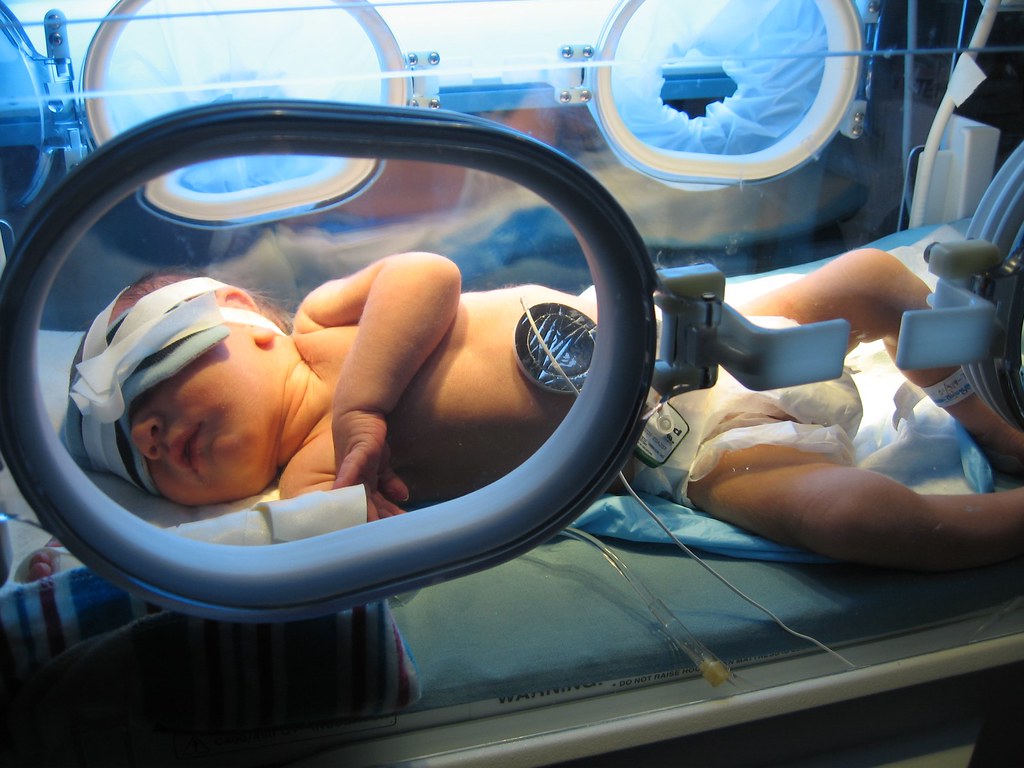Phototherapy to Treat Jaundice: Phototherapy is a widely used treatment for jaundice in newborns, a condition caused by high levels of bilirubin in the blood. This non-invasive procedure involves exposing the baby’s skin to a specific type of light, which helps break down the bilirubin so it can be more easily eliminated from the body. Phototherapy to treat jaundice is typically administered in hospitals or specialized care units, ensuring a controlled environment for effective treatment. The process is safe and has proven to be highly effective in reducing bilirubin levels, thus preventing potential complications associated with untreated jaundice in newborns.
Phototherapy to Treat Jaundice: Treating Jaundice
Phototherapy is a crucial treatment method for newborns with jaundice, a common condition characterized by yellowing of the skin and eyes. Jaundice results from the buildup of bilirubin in the blood, a waste product produced when red blood cells break down. Phototherapy involves exposing the newborn’s skin to specific wavelengths of light, which helps to break down the excess bilirubin and allow the body to eliminate it more effectively.
If left untreated, severe jaundice can lead to serious complications such as brain damage and hearing loss. Phototherapy is a safe and effective way to reduce the levels of bilirubin in the blood and prevent these potential complications.
Parents need to be aware of the signs of jaundice in their newborns and seek prompt medical attention if necessary. By promptly treating jaundice with phototherapy, healthcare providers can help ensure the health and well-being of newborns and prevent long-term complications.
Role of Phototherapy in Neonatal Jaundice: A Guide for Parents
Phototherapy is a common treatment for neonatal jaundice, a condition that occurs when a baby’s liver is unable to break down bilirubin effectively.
Parents play a crucial role in supporting their baby during phototherapy treatment. They can help by ensuring their baby receives the required amount of light exposure, which typically involves placing the baby under a special light or in a lightbox for a set amount of time each day. Parents need to follow medical advice closely and monitor their baby’s progress to ensure the treatment is effective.
It is important to communicate any concerns or changes in the baby’s condition to the healthcare provider promptly. With proper monitoring and support, phototherapy can help newborns with jaundice recover and thrive.
Single Phototherapy to Treat Jaundice: What to Expect
During a single phototherapy treatment for jaundice, the baby is placed under a special blue light that helps break down the bilirubin in the blood. The baby will be naked except for diapers to maximize the amount of skin exposed to the light.
The duration of the phototherapy treatment will vary depending on the baby’s bilirubin levels and how well they respond to the treatment. Nurses will regularly monitor the baby’s temperature, hydration levels, and bilirubin levels to ensure they are responding well to the treatment. The baby may also need to be fed frequently to help eliminate the bilirubin through their stool.
Parents can expect to stay with their baby during the phototherapy treatment, providing comfort and support as needed. The baby may become fussy or agitated during the treatment, but soothing techniques such as gentle rocking or swaddling can help keep them calm.
Harnessing the Power of Sunlight for Jaundice: A Natural Approach
For infants with jaundice, harnessing the power of sunlight can be a natural and effective approach to treatment. Exposing the baby’s skin to natural sunlight for short periods each day can help reduce bilirubin levels and alleviate symptoms of jaundice.
It is important to follow guidelines for safe sun exposure when using sunlight therapy for jaundice treatment. It is also crucial to monitor the baby’s skin closely for any signs of irritation or discomfort during the sunlight therapy sessions.
In addition to sunlight therapy, it is important to ensure that the baby is receiving adequate hydration and nutrition to support the body’s natural detoxification processes. Consulting with a healthcare provider is essential to determine the appropriate duration and timing of sunlight therapy for jaundice treatment, as well as to monitor the baby’s progress and ensure their overall well-being.
Utilizing Phototherapy for Neonatal Jaundice in Major Cities: Hyderabad, Pune, Mumbai, Bengaluru and more
Major cities in India such as Hyderabad, Pune, Mumbai, and Bengaluru have well-equipped neonatal care units that offer phototherapy as a standard treatment option. This non-invasive procedure involves placing the baby under special lights that help break down the excess bilirubin in their blood, ultimately reducing the jaundice levels.
In these major cities, hospitals and neonatal care centers have specialized equipment and trained healthcare professionals to monitor and administer phototherapy treatment for neonatal jaundice. With advancements in technology, phototherapy has become even more efficient and safe for newborns, ensuring a quick recovery and minimal complications. Parents in these cities can have peace of mind knowing that their newborns have access to top-notch medical care for this common but easily treatable condition.
Using at home jaundice lights can be an effective way to treat newborns with mild jaundice. These lights, typically blue LED, help break down bilirubin in the baby’s skin, reducing the yellowing. Parents can now manage jaundice at home with doctor-approved phototherapy devices, ensuring the baby receives consistent treatment in a comfortable environment. Always consult a pediatrician before starting at home jaundice light therapy to monitor bilirubin levels and ensure safety. It’s important to follow the recommended guidelines for light intensity, duration, and distance to maximize the effectiveness of the treatment.

